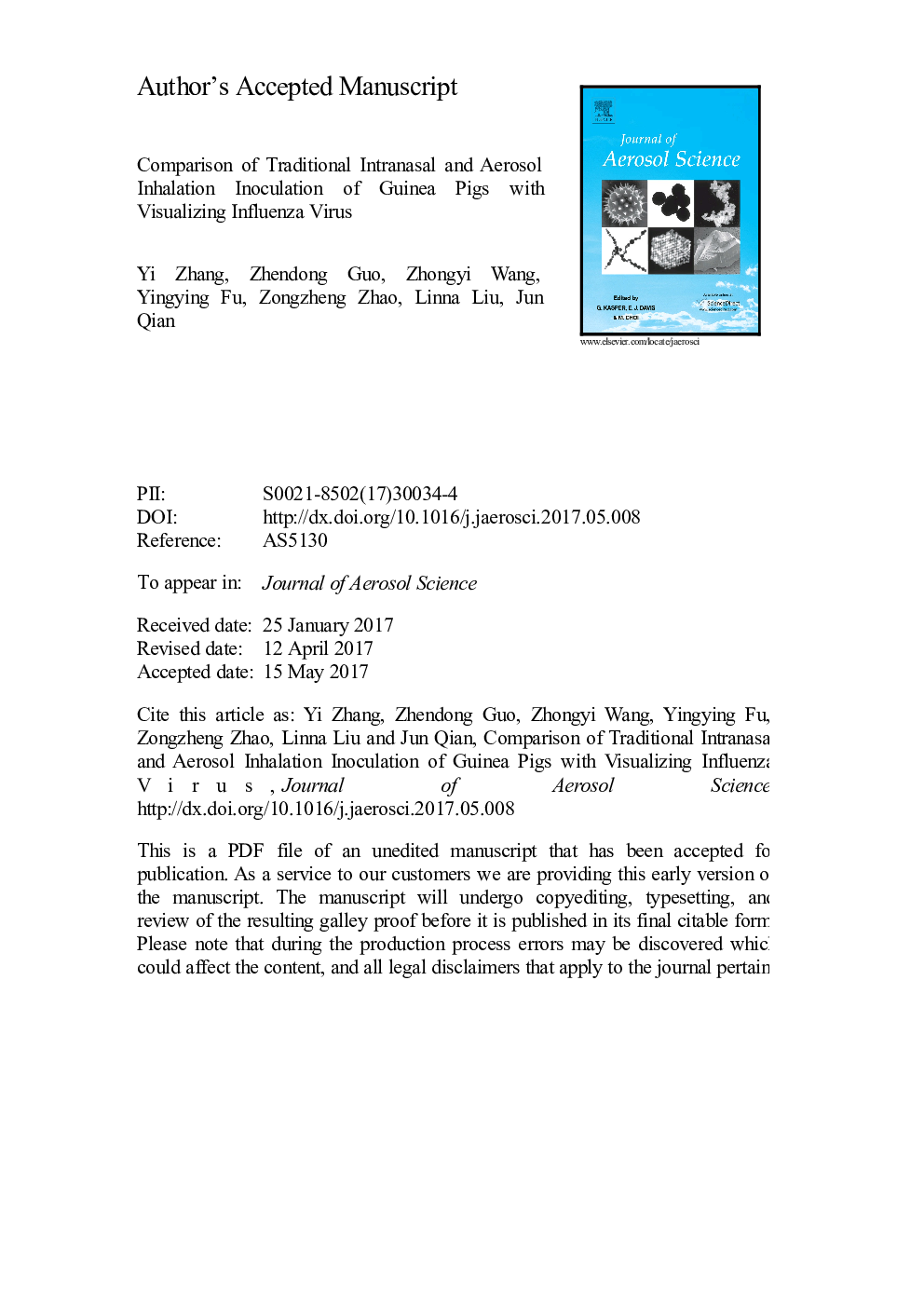| Article ID | Journal | Published Year | Pages | File Type |
|---|---|---|---|---|
| 5753853 | Journal of Aerosol Science | 2017 | 19 Pages |
Abstract
Influenza A virus has caused intermittent pandemics with potentially devastating consequences in human populations. Under natural conditions, influenza virus is mainly spread person-to-person through the air; however, in studies of influenza virology, the virus is typically intranasally instilled in the form of large liquid droplets. The dynamics of influenza virus infection and real-time progression of respiratory tract infection are still poorly understood, partly due to a lack of available efficient replication-competent viruses that stably express a reporter gene. To address this limitation, we constructed a replication-competent influenza A virus carrying a Gaussia luciferase reporter gene in the NA segment of the viral genome (IAV-Gluc). The recombinant virus (IAV-Gluc) stably expressed Gaussia luciferase, and the viral load in lungs was proportional to the fluorescence intensity. Although IAV-Gluc was less virulent than wild-type virus (PR8), it efficiently infected and replicated within murine lungs and was pathogenic in mice. After challenging guinea pigs with the equivalent doses of virus using two different methods, namely, intranasal (IN) inoculation and aerosol exposure (AR), it was found that the animals subjected to IN inoculation showed greater virus deposition in the lungs (12.27%) than those subjected to AR (1.34%), although the latter group exhibited more rapid viral replication within 48Â h. Combining the results of live-animal imaging and traditional techniques used to measure viral titer, we identified additional differences between IN inoculation and AR. For example, IN inoculation caused the virus to distribute in a punctate pattern throughout the lungs, whereas virus delivered through AR showed an even distribution pattern, which increased the efficiency of viral replication. Indeed, the replication efficiency of the AR group was 11,073-fold higher than the original deposition amount after 48Â h, whereas that of the IN group was only 15.4-fold higher than the original deposition amount after 24Â h.
Related Topics
Physical Sciences and Engineering
Earth and Planetary Sciences
Atmospheric Science
Authors
Yi Zhang, Zhendong Guo, Zhongyi Wang, Yingying Fu, Zongzheng Zhao, Linna Liu, Jun Qian,
